Six Decades of Supercars - 22 of the Greatest Exotics of All-Time
Speeding Through Time: What They Did and What We Said About Them
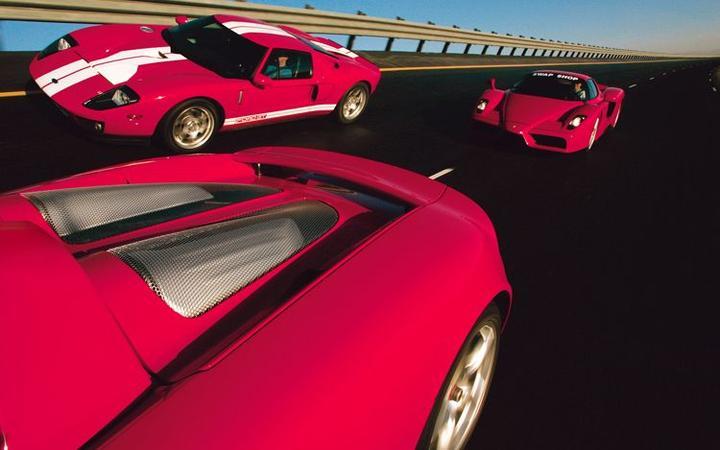
Although Britain's Car magazine, in the mid-1960s, legitimized the term "supercars" as part of the modern lexicon, it was hardly the first to use it. Car's editors applied the term to the decidedly super Lamborghini Miura, and it proved a perfect fit. About the same time, America's Car Life applied it to the original Pontiac GTO. The first known usage? As far as we can tell, the term was coined in an advertisement for the Ensign Six, all the way back in 1920.
No matter. Motor Trend has tested the all-time greats, and they're the stuff of which legend, dreams, and countless posters and wall calendars are made. Supercars had to be more than mere sports or musclecars: They needed to go, stop, and corner. Outrageous looks helped too.
And how the game has changed over the years. What was supercar performance 30 years ago is luxury sedan-level performance today. Top speeds have pushed ever higher, 0-to-60 times continue getting lower, and grip levels approach those achieved by race cars in the not-too-distant past. What hasn't changed is the supercar's ability to excite. Dazzling looks, futuristic technology, sounds that stir. And the charisma required to be printed onto that poster on a teenager's wall. Our 60th-anniversary celebration continues, as we look back at some of the supercars we've driven and tested through the decades.
01-03: 2003 FERRARI ENZO / 2005 FORD GT / 2004 PORSCHE CARRERA GT
Simply put, it was the fastest trio of supercars to which we've ever strapped test gear. Each was fabulous in every sense and to date represents a high point for its maker. The Ford GT was the reborn, street version of its record-setting, four-time Le Mans winner of the 1960s.
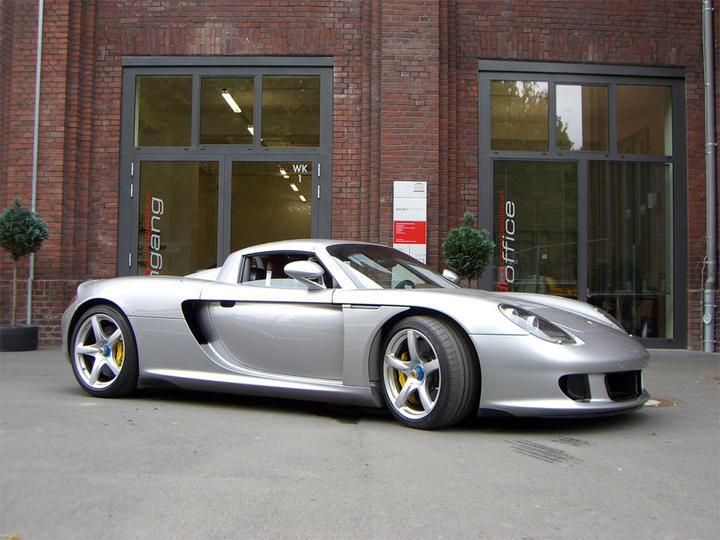
Porsche's Carrera GT was originally conceived as an endurance racer; when that program was canceled, the remains were reengineered for the street. Named for the founder, the Ferrari Enzo drew design and technology cues from several of the marque's Formula 1 greats. The slowest of them, the supercharged Ford GT, topped out at 200.1 mph on a five-mile banked oval in Arizona. It also notched the "worst" 0-to-60 time at 3.7 seconds.
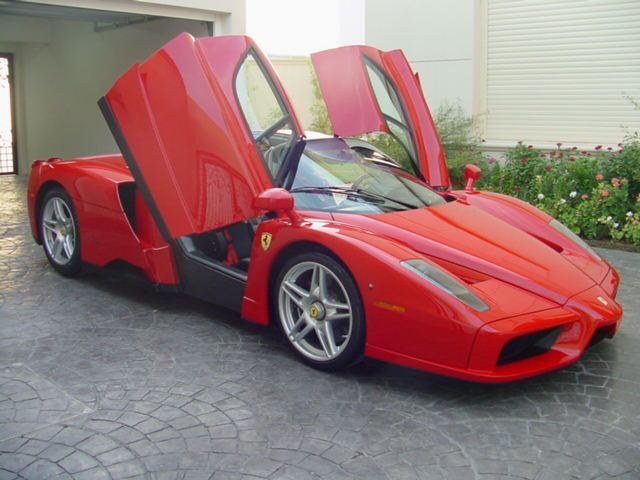
The Porsche's numbers were a bit better yet, but the Enzo ruled this day in the desert, hitting 60 mph in 3.4 seconds, blasting the quarter mile in 11.0 seconds flat and hitting 211 mph with CART and sports car pro racer Bryan Herta at the controls.
We wrote at the time in our exotic coupe comparison in October of 2004, "Like the Ford and the Porsche, the Enzo never stumbled, never got overly warm, never ran rough-even as we continued our handling runs into the 100-degree afternoon heat.
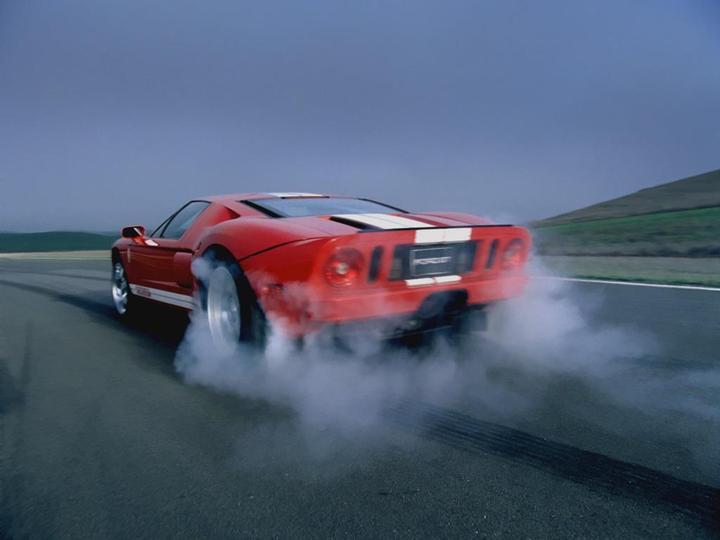
Which was perhaps the most eye-opening aspect of our top-speed flog: Today,
you can actually own and enjoy a bona-fide 200-mph supercar without being a contortionist or having to keep a staff of mechanics on your payroll."
Amazing times they were.
04: 1956 MERCEDES-BENZ 300SL
182-cu-in. I-6/220 hp, 0-60 8.5, 1/4 mile 16.1 @ 84.0
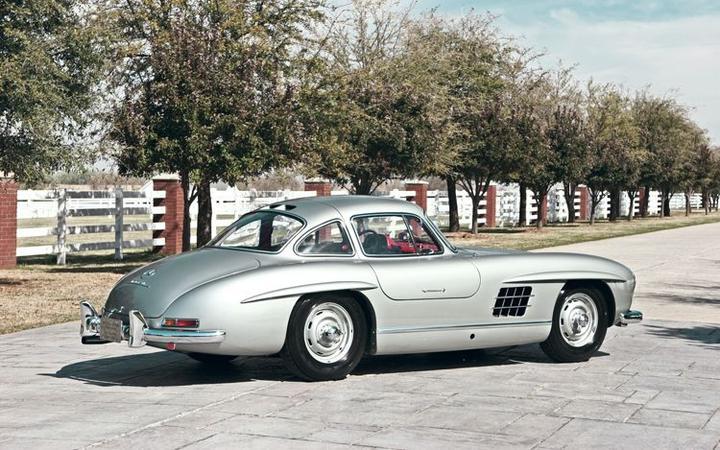
Few would argue that Mercedes' magnificent Gullwing was the first modern, postwar supercar. The SL coupe had it all: racebred power, steel or aluminum coachwork, and those impossibly exotic gullwing doors. "If there's a better production sports car in the world than the 300SL, show me the way," said editor Walt Woron as he climbed from one at El Mirage Dry Lake. In the July 1956 story, he added, "The biggest surprise you'll get from the SL's performance is the fact that there seems to be no end to the acceleration. It's there from the screeching rubber takeoff to the slap in the back of the neck when the 182-cubic-inch engine surges to 6000 rpm." If you doubt the validity of the original formula, just look at the new SLS AMG, which successfully remasters the theme for modern-day use.
05: 1961 JAGUAR E-TYPE
231-cu-in. I-6/265 hp, 0-60 7.0, 1/4 mile 14.9
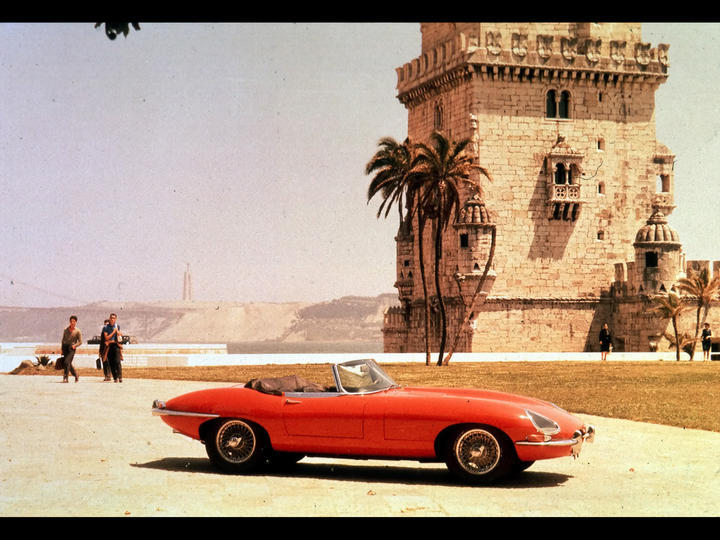
European editor Gordon Wilkins drove the E-Type for the July 1961 issue and said, "The 150-mph estimated top speed is no exaggeration. Just hold the engine at 2000 rpm and drop the clutch. There is a brief squeak from the tires, and the car streaks away as though it were rocket-propelled."
06: 1966 FORD GT40289-cu-in. V-8/335 hp, top speed 164 mph
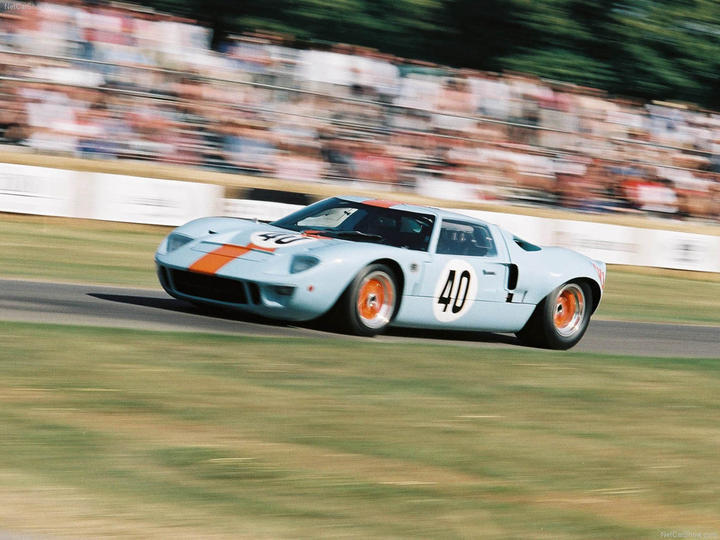
As the March 1966 story notes, "Fifty GT40s had to be built and offered for sale to nail down Le Mans eligibility. Ford went to the trouble to detune it for the street. The 4.7-liter V-8 makes 335 horses at 6250 rpm, cutting top speed to 164 mph. The car lists at $15,427, and customers must visit the factory in England for a seat fitting."
07: 1966 SHELBY COBRA 427427-cu-in. V-8/425 hp, 0-60 5.3, 1/4 mile 13.8 @ 106.0
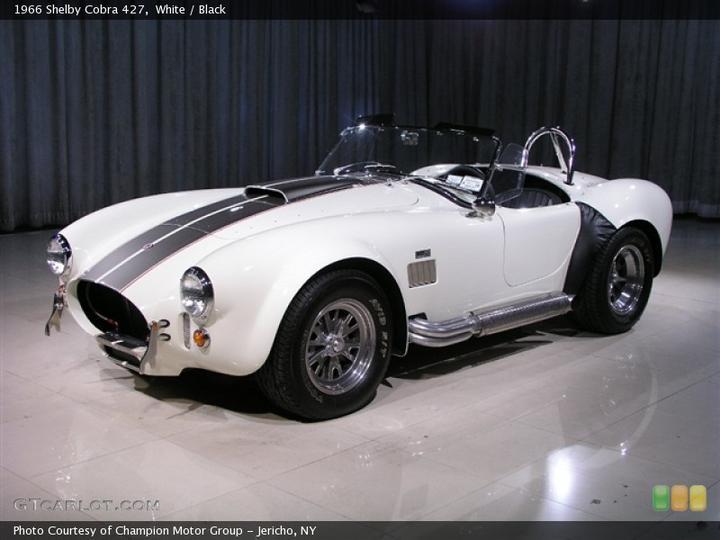
There wasn't much about the Cobra that qualified it as exotic. It was the opposite: A giant overhead valve Ford V-8 mounted up front and a roadster body with design cues dating back a decade, may not seem supercar-like. But the performance was so over the top, the rest didn't matter. Bob Schilling's commentary in the September 1966 issue describes this car best: "Assuming you have the money, and want a car to cruise at high speed, you can't do better. If you want to pretend that every stoplight is the grid at Nurburgring or every freeway the Mulsanne Straight, forget it. You can't afford the tickets."
427-cu-in. V-8/550 hp, 0-60 4.5 (est.), 1/4 mile 10.8 @ 130.0

Chevrolet built only two, and MT editor Eric Dahlquist drove one for our May 1969 issue. He wrote, "The ZL-1 doesn't just accelerate because the word is inadequate for this car. It tears its way across the pavement like all the modern big-inch racing machines, the engine climbing the rev band as the M&H slicks hunt for traction. You rocket from 30 to 145 mph. If the car had a higher gear, one of the engineers casually mentions, it will bust 195, maybe 200."
09: 1970 MERCEDES-BENZ C111Wankel Rotary, 0-60 5.0, top speed 162 mph
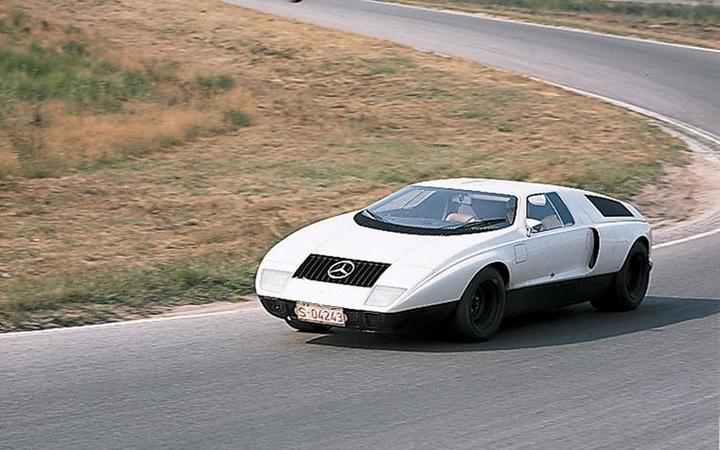
The Mercedes-Benz C111, like the original 300SL, was designed as a gullwing, street sports car. Mercedes wanted to build 50 C111s (for entry at Le Mans), but only made six. Eric Dahlquist wrote in the November 1969 issue, "It's like being sucked through a huge vacuum tube at the velocity of a .357 magnum. Going into a turn reveals the machine has a little built-in understeer, but the C111 coupe is the very next thing to driving a McLaren M8B, only for the street."
183-cu-in. flat-6/234 hp, 0-60 5.5, 1/4 mile 13.5 @ 105.3
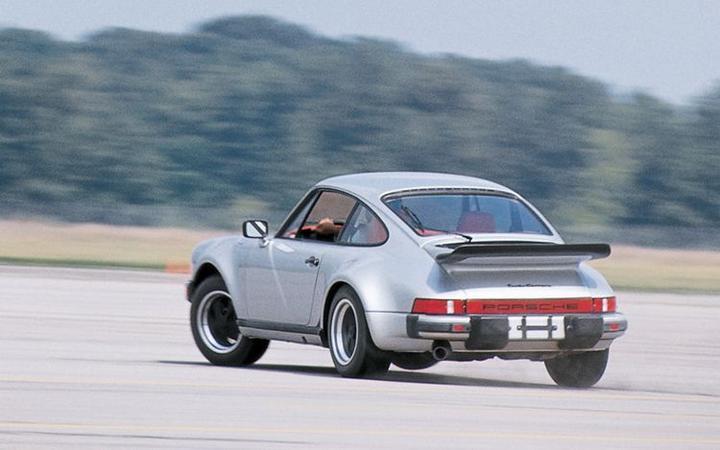
Due to the gas and insurance crunch, not many fast cars were produced in the mid-late 1970s. The first Porsche Turbo Carrera was an exception. Porsche took the lessons it learned about turbocharging from the 917 racing program and put them to good use. We drove a new Turbo Carrera cross-country for the April 1976 issue: "It's the type of automobile that cannot be driven slowly. We couldn't hold it under 70 mph for more than very short periods of time."
11: 1980 LAMBORGHINI COUNTACH S268-cu-in. V-12/475 hp, 0-60 6.0, 1/4 mile 14.6 @ 100.4
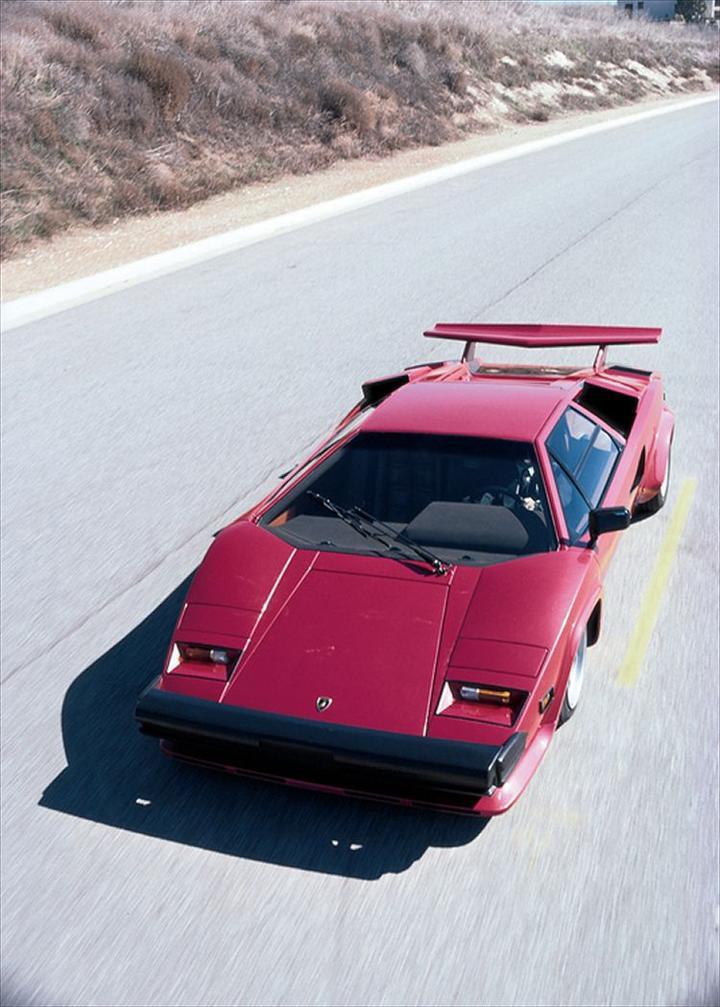
The unquestioned supercar poster child of the 1970s and '80s. At the time, it was illegal to import Countaches into the U.S.; however, self-proclaimed exoticar guru Al Mardikian found a way. Ro McGonegal took the car for a drive for the May 1980 issue, saying, "The V-12 hits you in the back of the head, and the Countach takes off like a bottle rocket. Its response is turbolike, and the rush it gives your body is the voice that crackles, 'Yes, keep the pedal to the floor.'"
12: 1979 BMW M1211-cu-in. I-6/277 hp, 0-60 5.5, top speed 162 mph (mfr. est.)
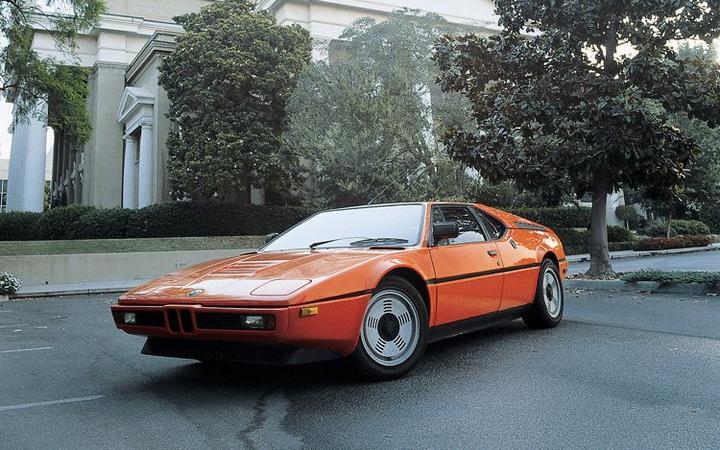
Roadgoing versions of the BMW M1 came about as a result of BMW wanting to race the car in Group 4 competition. The mid-engine exoticar uses an Italian-built chassis and body, combined with BMW engine, transaxle, suspension, and interior. It was an outrageous recipe for BMW at the time and set the tone for many a wonderful M machine to come. Jerry Sloniger wrote in the March 1979 story, "There certainly is more macho here than in a Turbo Porsche."
13: 1987 FERRARI F40179-cu-in. V-8/478 hp, 0-60 3.9 (est.), top speed 201.3 mph (mfr. est.)
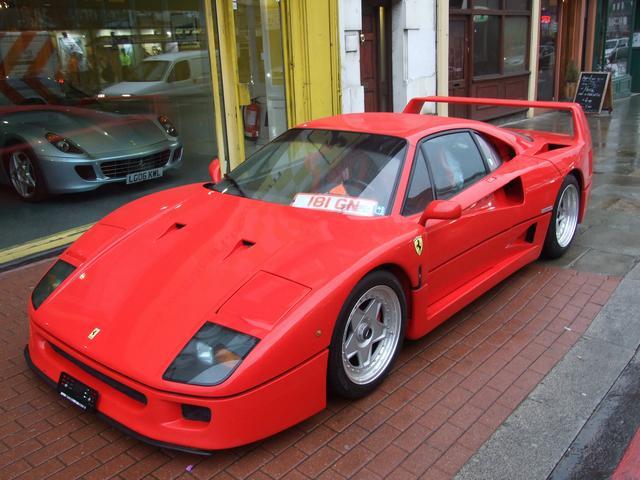
One of the 1980's top rock stars, and the last car to have personal design involvement by Enzo Ferrari. Don Fuller was elected to drive the mid-engine, twin-turbocharged V-8-powered F40 on Ferrari's Fiorano test track outside Maranello, Italy. "This thing doesn't just accelerate; it pounds. It's going 150, 160, and still rocketing. Let this monster loose, and the corners come up real, real fast. More engine and brake than tire, but a lot of each. And I used all I could."
14: 1988 PORSCHE 959
174-cu-in. flat-6/450 hp, 0-60 3.7, 1/4 mile 11.9
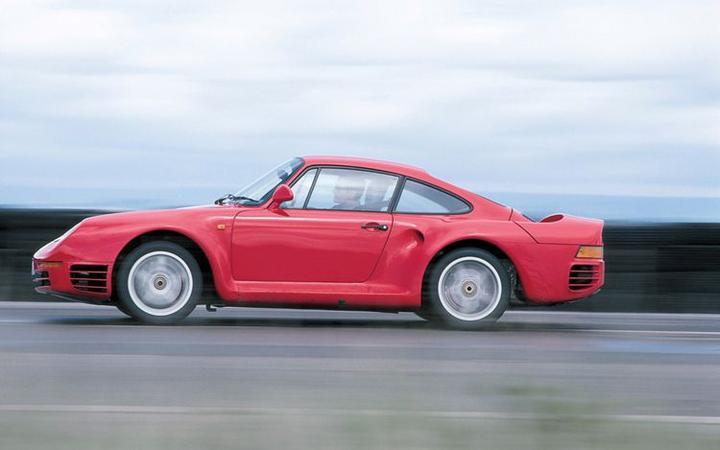
Like the F40, we drove the twin-turbocharged, AWD 959 in Europe long before Porsche would allow us to test it. Phillip Bingham wrote in the January 1989 issue, "The first of the two turbos goes silently to work. The rate of acceleration smartly hastens, the tach needle ascends like a military jet, and the four fat tires begin to claw at the tarmac. And then the second turbo erupts into action, launching the car down the road like a torpedo."
15: 1993 BUGATTI EB110214-cu-in. V-12/553 hp, 0-60 3.4, 1/4 mile 12.0, top speed 212 mph (mfr. est.)
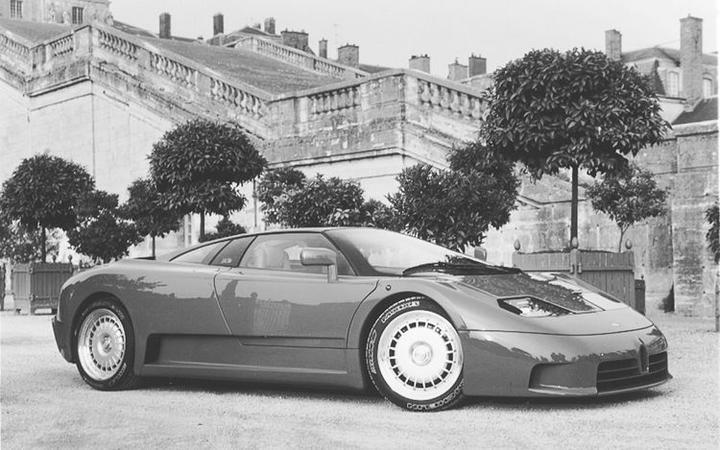
Bugatti's second postwar rebirth attempt yielded the Italian-built, all-wheel-drive, $480,000 EB110 with not one, not two, but four turbochargers. Bernard Cahier wrote, "The rear visibility isn't great. But then, who's going to try to pass you? For those worried about Ferrari F130s [F50s] or McLaren F1s, a 610-horsepower S version capable of 218 mph soon will be available."
16: 1994 MCLAREN F1370-cu-in. V-12/468 hp, 0-60 3.4, 1/4 mile 11.6, top speed 231 mph (mfr. est.)
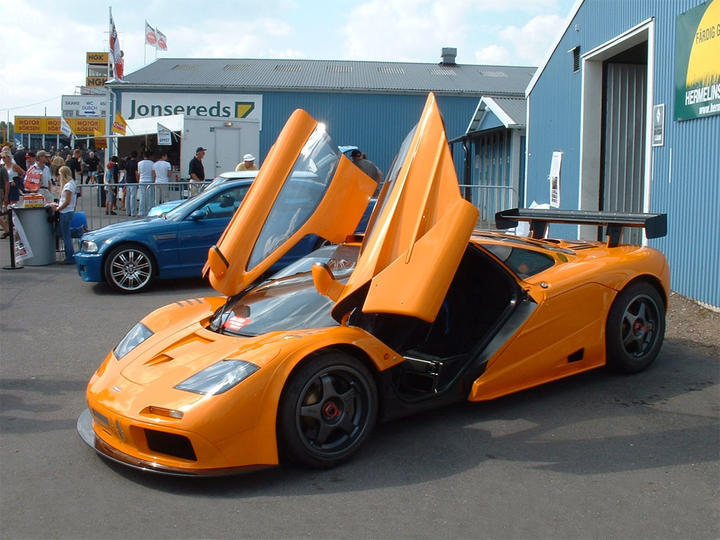
Gordon Murray conceived the BMW V-12-powered F1 as the ultimate exotic, inspired by the light weight and simple engineering of his best race-car designs. Phillip Bingham said, "In the time it takes to read this sentence, the McLaren F1 has accelerated from a standstill to 100 mph. Unless you're accustomed to being catapulted off the deck of an aircraft carrier, the experience is startling." It was so fast it needed to be detuned to compete at Le Mans, yet still won overall in 1995. Considered by many to be the supercar high watermark of all time.
17: 2008 FERRARI 430 SCUDERIA263-cu-in. V-8/503 hp, 0-60 3.1, 1/4 mile 11.2 @ 126.7
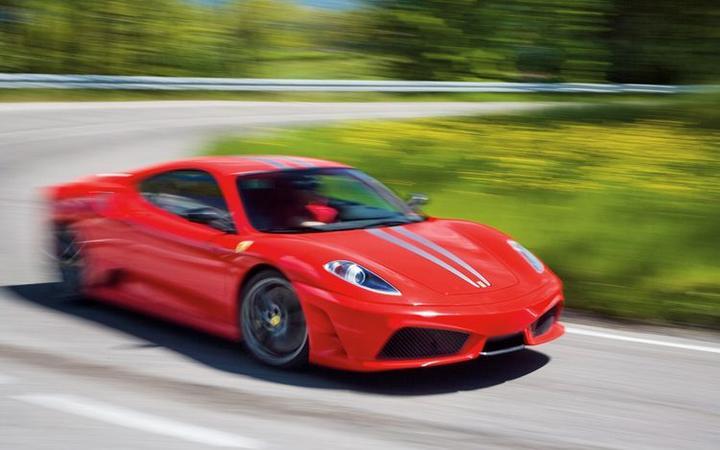
It takes something special to outrun, outgun, and outshine an Enzo. But technology marches on, and Ferrari's smaller, less powerful, less expensive 430 Scuderia got it done. Just look at those numbers, among the best we've ever achieved for a street-legal car. What the data doesn't tell you is the spine-rippling sound this car makes, and the sensation of snapping off lightning-quick, full throttle shifts at the Scud's 8500-rpm redline.
18: 2003 LAMBORGHINI MURCIELAGO378-cu-in. V-12/571 hp, 0-60 3.5, 1/4 mile 11.7 @ 122.5
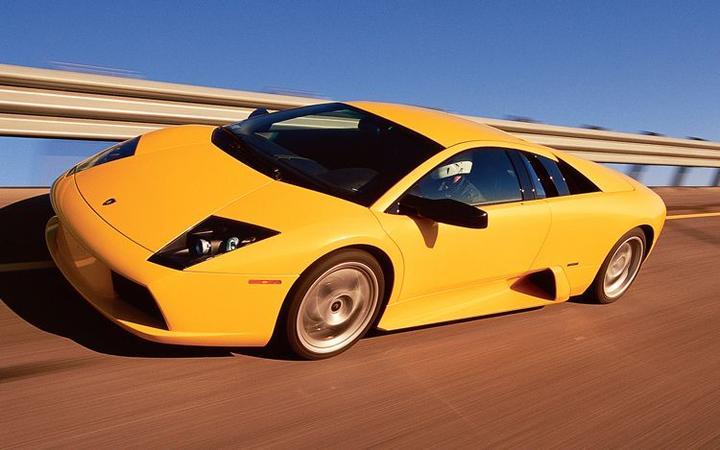
Like the Diablo, Countach, and Miura before it, the Murcielago cemented Lamborghini's place in the world as a builder of outrageous machines. Le Mans class-winning pilot Justin Bell said, "I'm going, 'Come on, baby, you can do it,' and I'm really pushing it. I had the mirrors folded in; I had my ears folded in, trying to hit 200. Wow!" That's okay, Justin; 193 and still pulling is plenty good enough.
220-cu-in. flat-6/530 hp, 0-60 3.4, 1/4 mile 11.4 @ 127.9
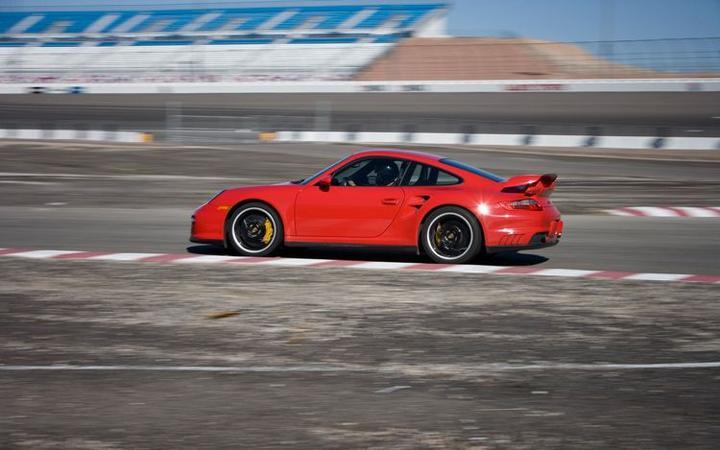
Proving there's lots of life left in the near-50-year-old Porsche 911 formula, we said the current, 997-series GT2 is "brilliantly engineered and bulletproof. Unreal speed, hellacious grip, and superb controls-everyday drives become laps at Le Mans."
20: 2009 CHEVROLET CORVETTE ZR1376-cu-in. V-8/638 hp, 0-60 3.3, 1/4 mile 11.2 @ 130.5
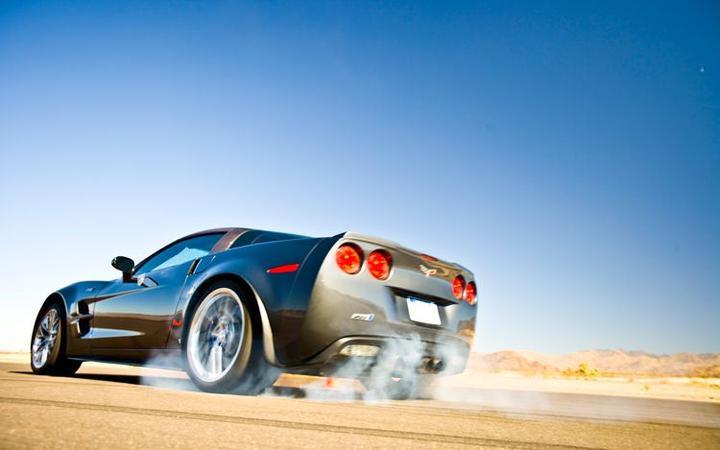
Another of the few Corvettes that qualifies for supercar status. Arthur St. Antoine wrote, "Class-shattering power, race-car handling grip, and sweet control inputs leave even the bluebloods in this Chevy's wake." With supercharged, all-aluminum V-8 power, carbon-ceramic brakes, and the Le Mans-winning C6R as its cousin, it's the best Vette yet.
21: 2009 NISSAN GT-R232-cu-in. V-6/480-hp, 0-60 3.2, 1/4 mile 11.6 @ 120.0
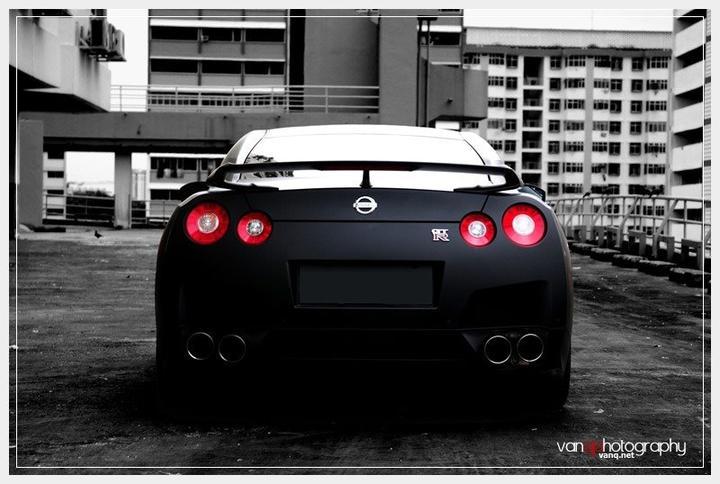
If computer video games have replaced the exoticar posters of 30 years ago, the GT-R is the poster child of the current performance generation. It's heavy, and the engine is located up front instead of in the middle (as with most exotics), but solid engineering and whiz-bang electronics technology help the baddest-ever Nissan run with supercar kings. Motor Trend's 2009 Car of the Year, it's one we'll be talking and writing about three decades from now.
22: 2006 BUGATTI VEYRON 16.4489-cu-in. V-16/1001-hp, 0-60 2.7, 1/4 mile 10.4 @ 139.9
Sixteen
cylinders.
Four turbochargers. A
seven-speed transmission.
One thousand and one horsepower. The Bugatti Veyron is a numbers car if ever there was one. Not everybody likes it: It's large, heavy, mechanically complicated, and stratospherically expensive. But everyone totally respects what it can do. Bugatti claims it will build just 300 of them, and when they're gone, its not likely anything will come along that will exceed its record-setting performance. How fast is it? Kim Reynolds wrote in the November 2006 issue, "The fastest! Peak velocity? Two hundred mph? Three hundred mph? Who knows? This thing might never stop."
MT!